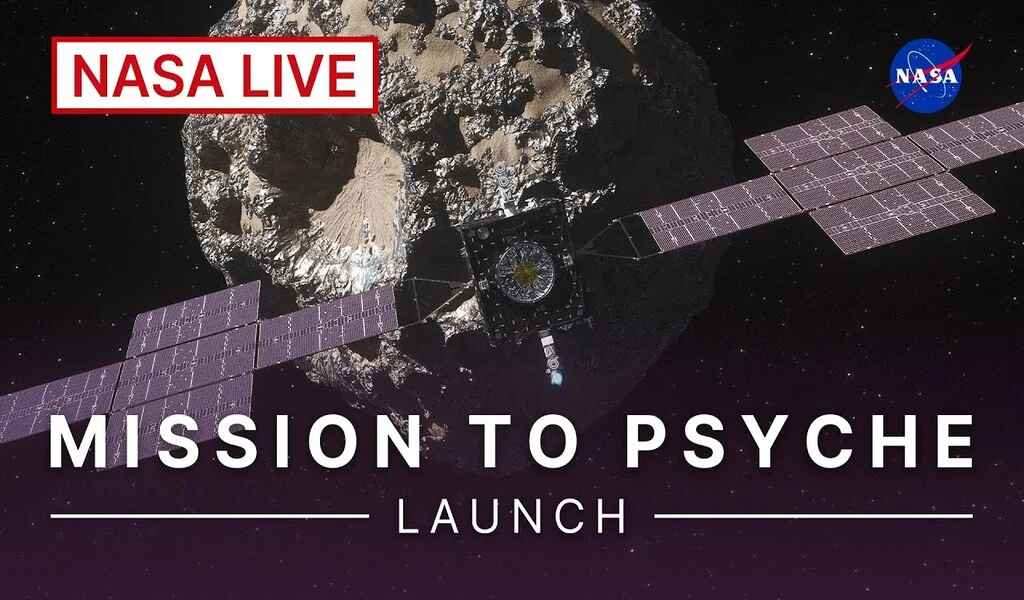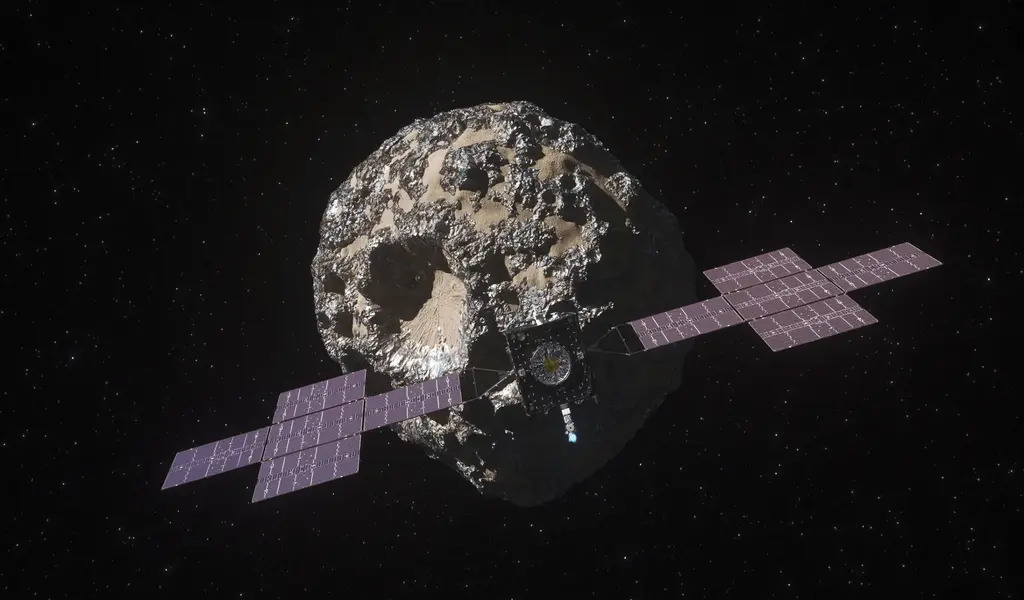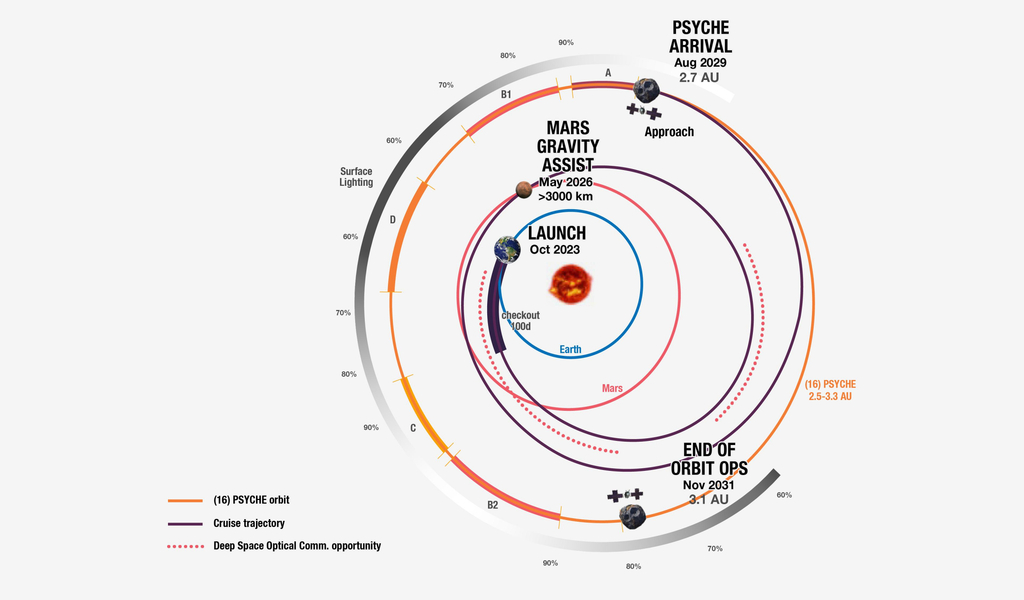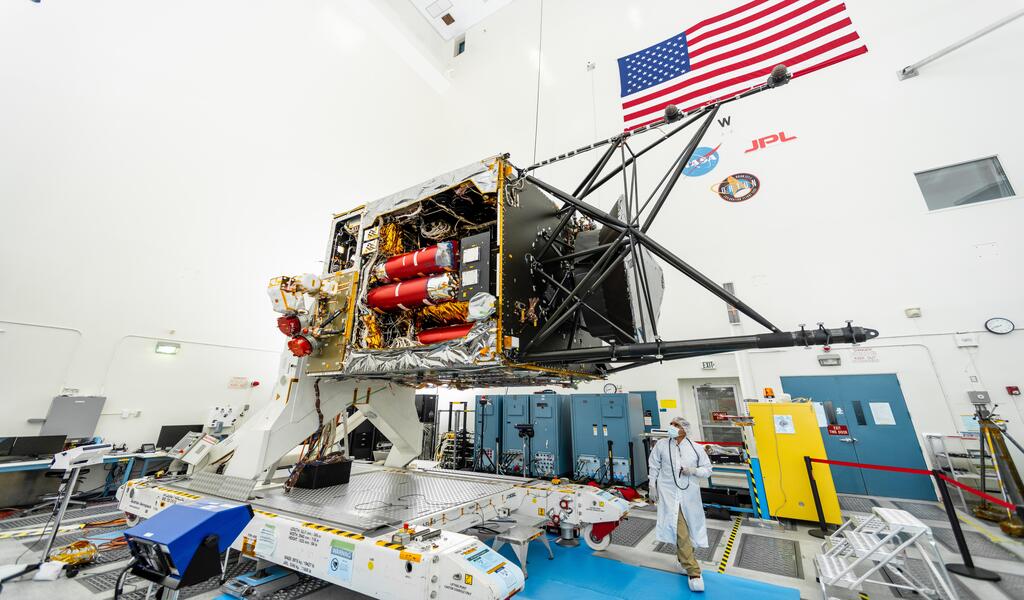Tech
NASA Launches Psyche Metal Asteroid Mission: What You Need to Know

(CTN NEWS) – The spacecraft embarked on its mission atop a SpaceX Falcon Heavy rocket, commencing a six-year voyage to reach one of the enigmatic celestial bodies within the asteroid belt, situated between the orbits of Mars and Jupiter.
The asteroid Psyche has intrigued scientists for a long time, with questions about whether it’s primarily composed of metal and if it might be the exposed core of a protoplanet, possibly stripped of its outer layers during an early solar system collision.
While these questions remain unanswered, NASA‘s Psyche mission is set to explore the asteroid, which could lead to groundbreaking discoveries.
Lindy Elkins-Tanton, the mission’s principal investigator and a professor at Arizona State University, emphasized that this mission may challenge current ideas and theories, and the prospect of being proven wrong is an exciting aspect of scientific exploration.
The journey to uncover Psyche’s mysteries began with the launch of NASA‘s spacecraft, also named Psyche, on a SpaceX Falcon Heavy rocket.
The launch took place from Kennedy Space Center in Florida and marked the start of a six-year voyage into the asteroid belt between Mars and Jupiter. The launch proceeded smoothly despite earlier concerns about unfavorable weather conditions.
The spacecraft detached from the Falcon Heavy rocket, embarking on a journey of about six years and covering billions of miles to reach its destination.
The Psyche mission reached a significant milestone when its managers at NASA‘s Jet Propulsion Laboratory in California received an initial signal from the spacecraft about five minutes after its launch.
This signal marked the successful commencement of the mission.
Asteroid Psyche, discovered in 1852, has long captivated astronomers with its intriguing characteristics.
Initially observed as a starlike point of light in orbit around the Sun, it was one of the early asteroids to be discovered.
Subsequent observations revealed that the asteroid’s color resembled that of iron meteorites that have fallen on Earth.
Radar pulses bounced off Psyche returned significantly brighter reflections than those from other small objects in the asteroid belt.
These findings strongly suggested that the asteroid contains highly radar-reflective components, likely metallic fragments.
Moreover, when Psyche passed relatively close to larger celestial bodies, its orbit exhibited deflections indicating the presence of a substantial mass, potentially denser than typical rock.
While most rocks have a density of 2-3 grams per cubic centimeter, water has a density of about 1 gram per cubic centimeter, and metals like iron range from 6-9 grams per cubic centimeter.
Based on these observations, it is conceivable that Psyche is nearly pure metal, akin to Earth’s core, primarily composed of iron and nickel.
This has led to the hypothesis that Psyche might be the core remnant of a protoplanet, formed during the early solar system.
These protoplanets, known as planetesimals, have internal temperatures high enough to melt and segregate denser metals toward their cores.
Exploring the core of a planet like Earth, situated 1,800 miles below the surface, is impossible.
The Psyche mission aims to provide invaluable insights into the composition of Psyche, which could offer new knowledge about planetary cores, or potentially challenge existing hypotheses.
The uncertainty surrounding Psyche is a driving force for scientists eager to be surprised by the asteroid’s revelations.
More recent measurements have revised downward the estimates of Psyche’s density to just under four grams per cubic centimeter.
While this is still denser than rock and ice, it falls short of the density of metals like iron.
These measurements imply that Psyche is composed of a combination of metal along with something else, potentially rock or even empty space.
Based on current data, scientists speculate that over half of Psyche’s composition may be metallic.
However, even if Psyche is rich in valuable metals, the asteroid’s location is far too distant for current technologies to mine effectively.
At its closest approach to Earth, Psyche is approximately 150 million miles away, which is five times the distance between Earth and Mars during their closest possible alignment.
The Psyche mission was initially scheduled for launch a year earlier but faced significant challenges related to the navigation software needed to guide the spacecraft.
Compatibility issues between the flight software and verification tools caused the problems, and engineers couldn’t resolve them within the launch window.
An independent review, commissioned by NASA, attributed the delay to leadership changes, communication issues, heavy workloads, and the impact of the COVID-19 pandemic.
The mission regained momentum for a 2023 launch by recruiting new mission staff, reducing remote work, and implementing recommendations from the review.
There were additional hiccups before the launch. While originally scheduled for October 5, the launch was postponed when tests revealed that the thrusters, used for spacecraft orientation, produced higher temperatures than expected.
NASA resolved this issue by planning to run the thrusters at lower power levels to prevent overheating in space.
Once launched, the Psyche spacecraft will embark on a journey toward Mars, making a flyby of the red planet in May 2026.
It will use Mars’ gravity to slingshot itself towards the Psyche asteroid, arriving at the asteroid in August 2029 after covering a distance of approximately 2.2 billion miles.
During its journey, the Psyche spacecraft will participate in an experiment called Deep Space Optical Communications, involving the exchange of laser messages with Earth.
Traditional spacecraft communication relies on radio waves, but shifting to lasers could potentially increase deep space transmission bandwidth by up to 100 times.
This experiment aims to demonstrate this novel technology for long-distance communication.
Once it reaches the asteroid, the spacecraft will spend at least 26 months in orbit around Psyche, equipped with various instruments for in-depth study:
- Multispectral imagers will provide close-up views of Psyche’s surface, revealing features that are not visible from Earth.
- A magnetometer will search for evidence of an ancient magnetic field on the asteroid.
- A gamma-ray spectrometer will detect high-energy gamma rays and neutrons created when cosmic rays collide with the asteroid’s surface, offering insights into its composition.
- The spacecraft’s radio antenna will map the asteroid’s gravity field by measuring Doppler shifts in the signal frequency, allowing for the detection of density differences within the asteroid.
It’s important to note that no single instrument will conclusively determine whether Psyche is a planetary core.
Instead, it will be the collective data from all these instruments that holds the key to understanding the asteroid’s nature.
For over 170 years, Psyche has been a distant celestial object with limited information available.
Telescopes have offered some hints about its characteristics, but the Psyche spacecraft aims to provide a comprehensive and detailed examination, shedding light on the asteroid’s origins.
MORE RELATED NEWS:
AMD To Acquire AI Startup Nod.ai To Strengthen Software AI Capabilities
Microsoft Teams Unveils Revamped And Speedier Chat Client For Windows And Mac Users
Meta’s Proposed $14 Monthly Ad-Free Instagram Subscription Sparks Privacy Debate In Europe






























